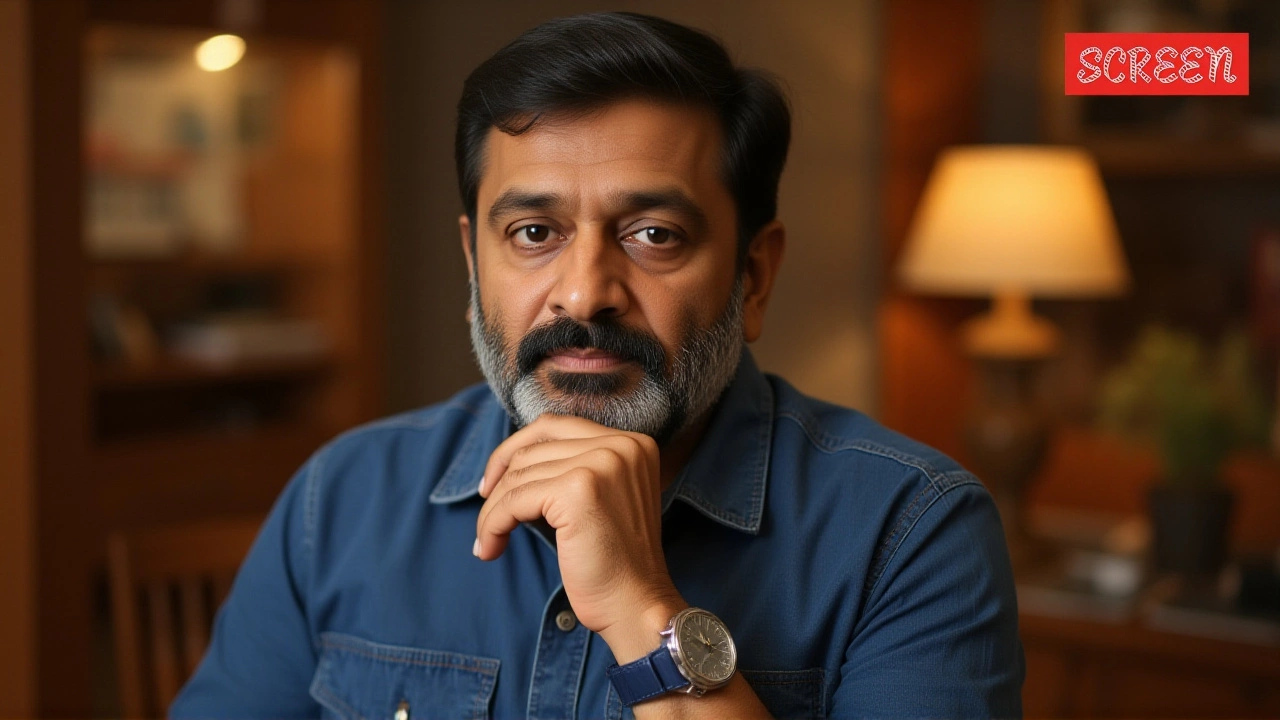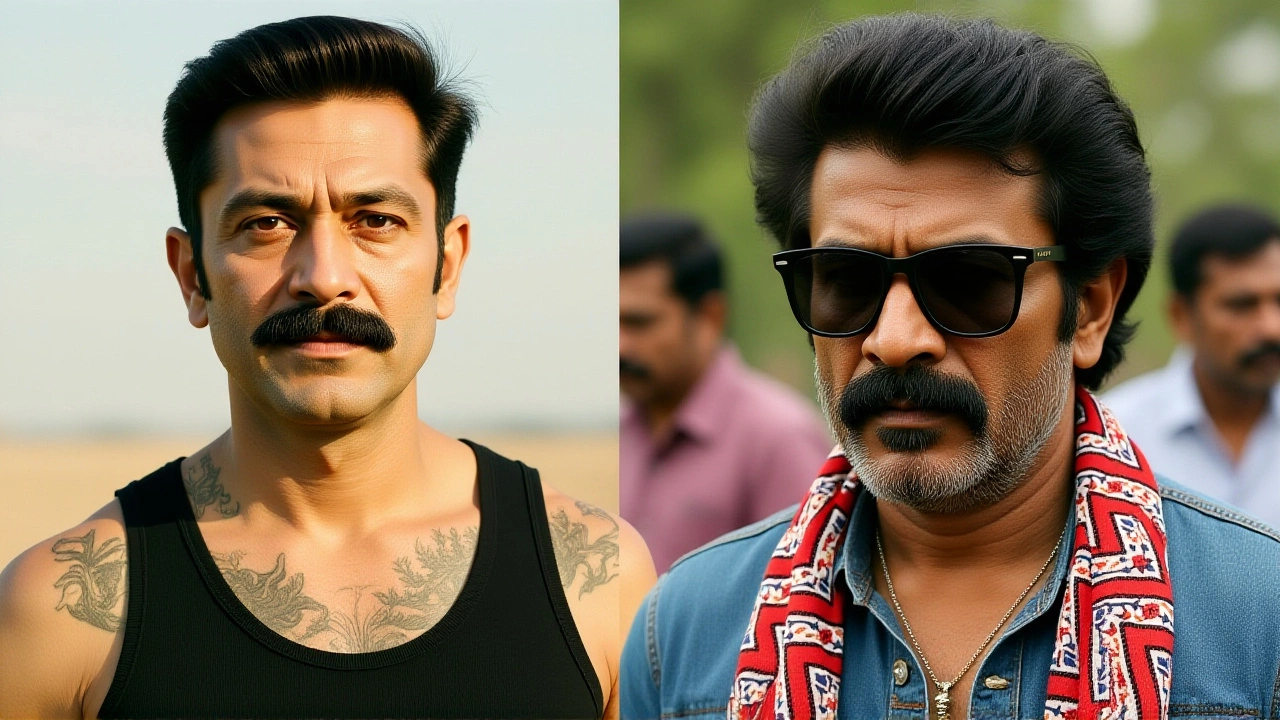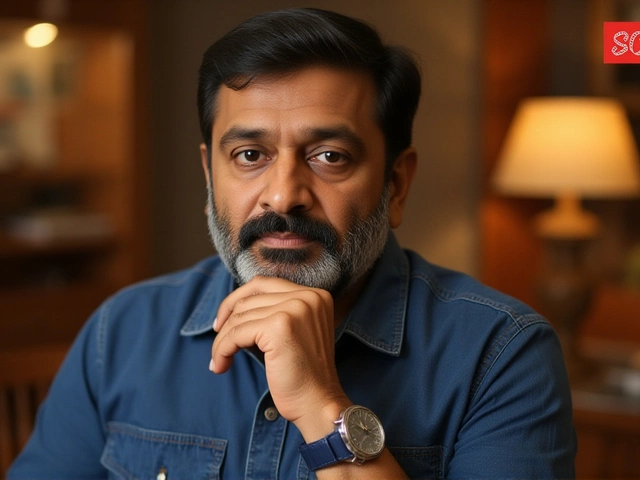Paresh Ganatra quit AVP job for Bollywood, says he’d earn 10× more

When Paresh Ganatra, a seasoned actor who’s shared screen space with Aamir Khan on several blockbusters, he let the world in on a startling confession: he walked away from a cushy Assistant Vice President (AVP) role to chase the uncertain glitter of Bollywood.
The interview, conducted by The Indian Express on April 22, 2024 in Mumbai, revealed that the decision cost him dearly in cash. "I would have earned ten times more if I had stayed in the corporate world," Ganatra told the reporter, his voice a mix of pride and lingering regret.
From Corporate Boardrooms to Film Sets
Ganatra’s corporate climb wasn’t a footnote. He reached the AVP grade at a leading Indian bank, a position that typically commands a salary between INR 30‑35 lakh per year, plus bonuses and perks. "The job came with a corner office, a firm hand‑shaking network, and the kind of security you only see on TV dramas," he recalled.
But the siren call of the silver screen was louder. After a few minor theatre gigs, the actor decided to quit in 2010, swapping spreadsheets for scripts. "It felt like stepping off a moving train and into a dark tunnel, hoping there’s a light at the other end," he joked. Within a year, Ganatra landed a supporting role in Ghajini, where he brushed shoulders with Khan’s action‑hero persona.
The Financial Trade‑off: Numbers and Reality
Here’s the thing: the Bollywood pay‑scale is a roller‑coaster. While lead stars can command upwards of INR 5 crore per film, a character actor like Ganatra usually nets INR 3‑5 lakh per project, sometimes less if the film underperforms. Multiply that by the average number of films an actor does in a year—two to three for many supporting players—and you’re looking at an annual income of roughly INR 8‑12 lakh.
Contrast that with the AVP salary, plus the pension and healthcare benefits that come with a corporate gig. "If I had stayed, by 2024 my total compensation would have easily crossed INR 2 crore," Ganatra estimated, citing industry salary surveys. Yet, he added, the trade‑off wasn’t just about money: “I gained stories, friendships, and an audience that never sat in a boardroom.”
Typecasting in Bollywood: Ganatra’s Experience
Turns out, the film world had its own trap. Ganatra confessed that after his breakout, casting directors kept offering him the same “lovable uncle” or “comic sidekick” parts. "I was stereotyped before I even got a chance to prove I could play a villain or a serious lead," he said, frustration evident.
Industry insiders say this isn’t unique. A 2022 study by the Film & Television Institute of India found that 68% of character actors in Hindi cinema feel pigeon‑holed after their first five films. The same report highlighted a gender gap: women are typecast even more aggressively, often limited to romantic or nurturing roles.

Industry Perspective: What Other Actors Say
Ganatra’s story echoes the experiences of fellow actors. Veteran character artist Vipin Sharma once told Times of India that he had to take a meat‑cutting job in Canada to keep his family afloat, despite being a vegetarian.
Meanwhile, newcomer Rhea Kapoor—not to be confused with the producer—shared on a recent panel that even with a family name, breaking out of the “comic relief” box can take up to seven years of relentless auditions.
What This Means for Aspiring Performers
So, what’s the takeaway for anyone eyeing the glitz? First, there’s no one‑size‑fits‑all answer. If you have a secure, high‑paying corporate job, the financial risk is real. But the intangible rewards—creativity, public connection, legacy—are harder to quantify.
Experts suggest a hybrid approach: keep a fallback profession while building a portfolio. "Many successful actors today teach workshops or run side businesses," notes entertainment economist Dr. Ananya Singh of the Indian School of Business. "That cushion can offset the volatility of film income and reduce the pressure to accept typecast roles just for cash."
Ganatra, now a regular at Mumbai’s indie film festivals, says he’s comfortable with his past choices. "I may not be a millionaire, but I’ve lived stories that a boardroom could never offer," he smiles.
- AVP annual salary in India (2023): INR 30‑35 lakh
- Average earnings per Bollywood character‑actor film: INR 3‑5 lakh
- Percentage of actors feeling typecast: 68% (FTII 2022 study)
- Ganatra’s first major film with Aamir Khan: Ghajini (2008)
- Interview date: April 22, 2024, Mumbai
Frequently Asked Questions
How does Ganatra’s story impact aspiring actors from corporate backgrounds?
It shows that while the financial safety net of a corporate role is tempting, the artistic fulfillment and unique experiences of acting can outweigh monetary loss for many. Ganatra’s candid numbers help newcomers weigh the trade‑off realistically.
What were the typical earnings for an AVP in 2023 compared to a Bollywood character actor?
An AVP at a major Indian bank earned around INR 30‑35 lakh per year, including bonuses. In contrast, a character actor like Ganatra usually makes INR 3‑5 lakh per film, often totaling under INR 12 lakh annually.
Why do many Bollywood actors get typecast, and is it changing?
Casting directors often rely on proven formulas, funneling actors into familiar archetypes. A 2022 FTII survey found 68% of character actors feel stuck in repeat roles. However, streaming platforms and independent cinema are gradually offering more diverse parts.
Which films did Ganatra share the screen with Aamir Khan?
Ganatra appeared alongside Khan in "Ghajini" (2008) and later in the comedy "PK" (2014) as a supporting comic relief character. Both films were major box‑office hits.
What advice does Dr. Ananya Singh give to actors balancing finance and passion?
She recommends maintaining a side income—such as teaching, freelance work, or a small business—to cushion the unpredictable nature of acting gigs. This strategy lets actors be selective, reducing the pressure to accept typecast roles purely for cash.
